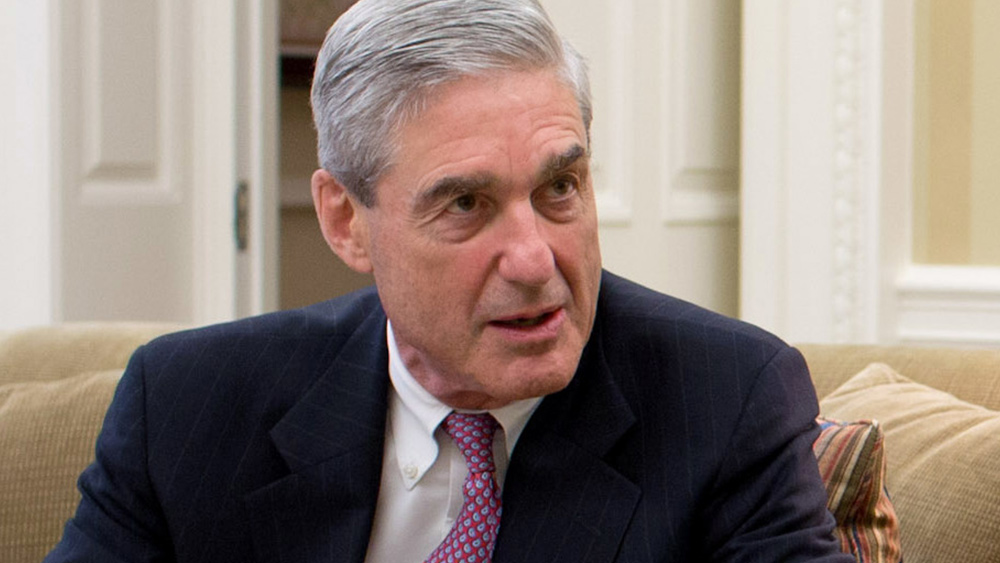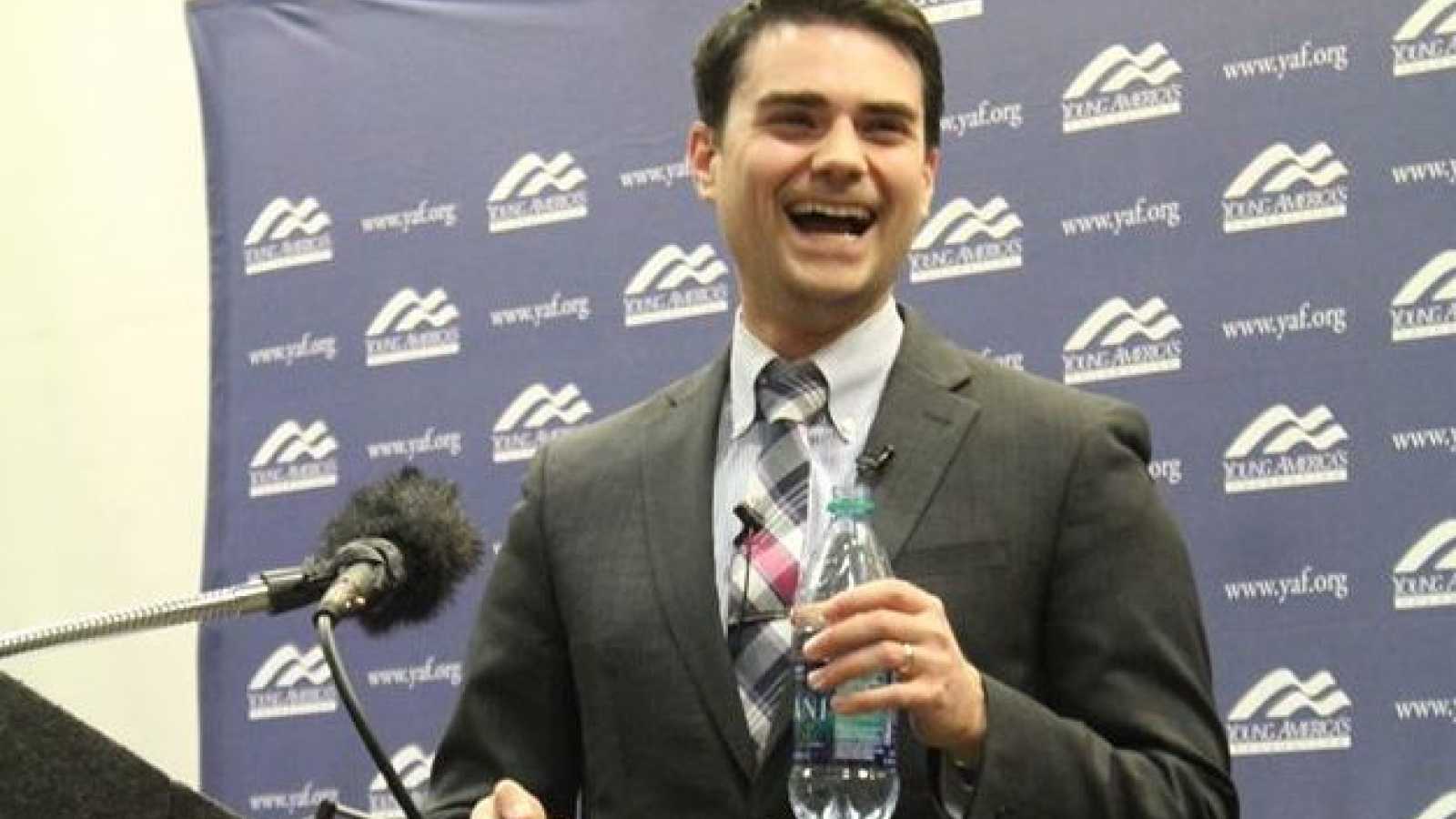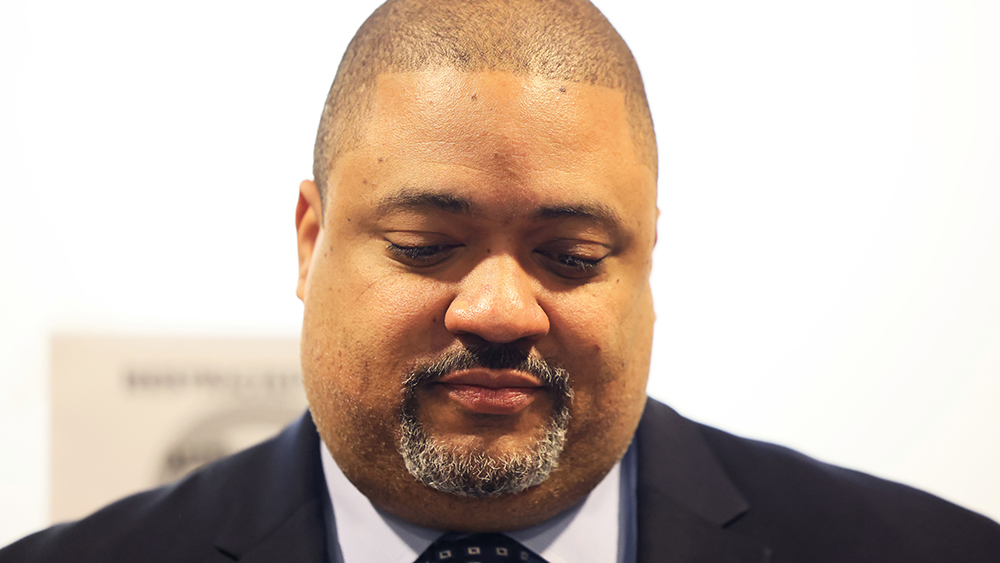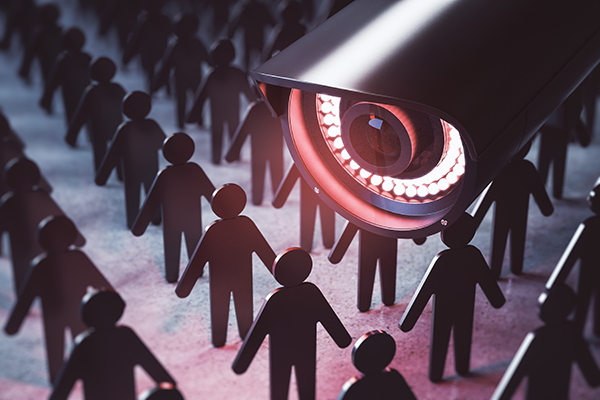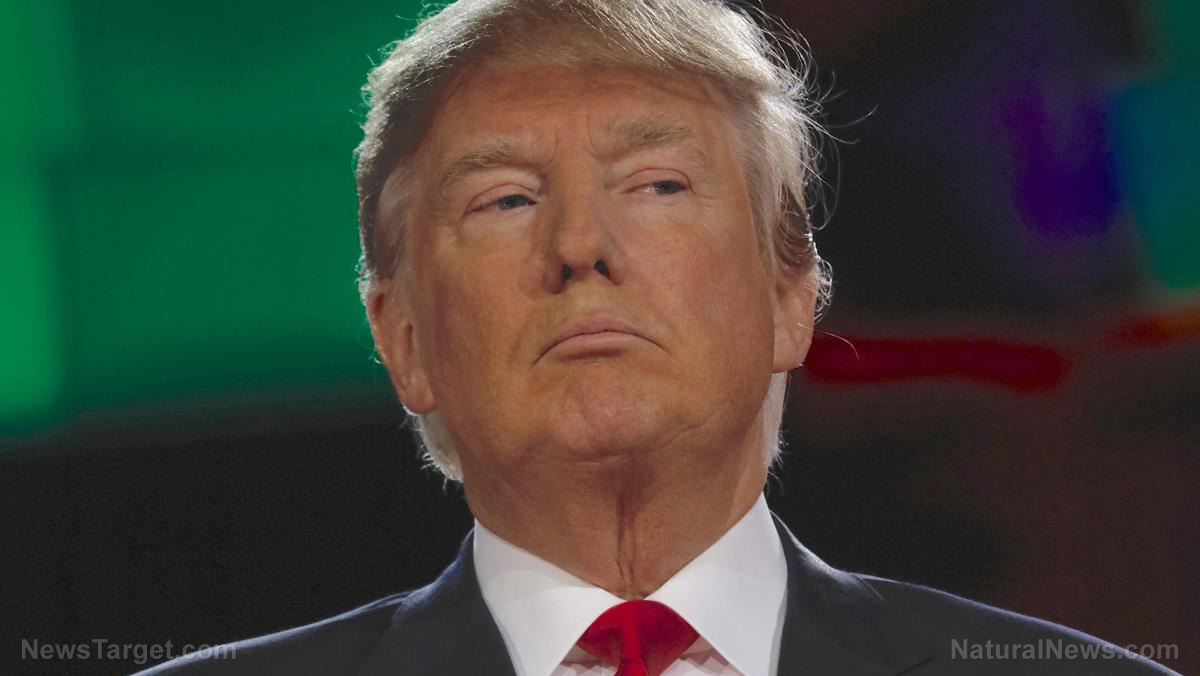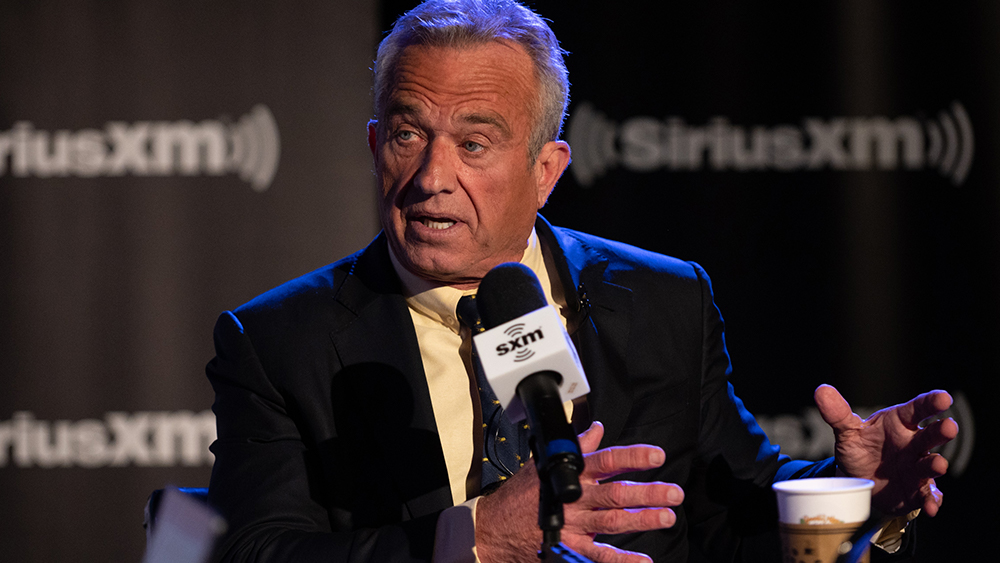Kids, vaccines and autism: Will a new legal strategy end the decades-long battle for truth and justice?
04/30/2024 / By News Editors

When the parents of Yates Hazlehurst took their normal, happy 11-month-old to the doctor on Feb. 8, 2001, for an ear infection, the clinic gave Yates his 12-month shots — the measles, mumps and rubella (MMR), Prevnar, Haemophilus influenzae type b (Hib), and Hepatitis B vaccines — even though Yates had an ear infection and was not yet quite 1 year old.
(Article by Brenda Baletti, Ph.D. republished from ChildrensHealthDefense.org)
Twelve days later, Yates developed a high fever, rash and vomiting. In the months that followed, he stopped speaking in meaningful language, became obsessed with numbers and letters and his behavior became erratic and difficult to contain.
He also developed physical health problems, including gastrointestinal issues and different infections.
On June 3, 2002, after many doctor visits, a psychologist diagnosed Yates with autism spectrum disorder.
Dr. Jean-Ronel Corbier, the neurologist who evaluated Yates and diagnosed him with “regressive autism,” theorized Yates’ autism was a response to the MMR vaccine.
Dr. Andrew Zimmerman, a pediatric neurologist at the Center for Autism and Related Disorders at Johns Hopkins’ Kennedy Krieger Institute, tested Yates for a mitochondrial disorder that he thought might have made Yates vulnerable to vaccine-induced regressive autism, particularly when vaccinated while ill.
After they learned that Yates’ condition was vaccine-related, the Hazlehurst family in 2003 filed a claim with the National Vaccine Injury Compensation Program (VICP), which adjudicates vaccine injury claims.
Also known as the “vaccine court,” the program was designed by Congress in 1986 to address the risks of “unavoidably unsafe” vaccines by both insulating vaccine manufacturers from liability for vaccine injuries and compensating families whose children are injured by vaccines.
Although they didn’t realize it at the time, the Hazlehursts’ story was nearly identical to that of thousands of families across the country, whose once healthy children quickly descended into silence or erratic behavior and severe physical illnesses that often accompany autism following their childhood vaccines — either thimerosal/mercury-containing vaccines or the MMR vaccine.
Many parents filed claims with the vaccine court, seeking financial resources to pay for their children’s medical bills and lifetime care.
By 2002, the number of families filing claims with the VICP alleging vaccine-induced autism had increased exponentially from the beginning of the program.
To deal with this massive influx of claims, the Office of Special Masters combined what would become 5,000-plus claims into the Omnibus Autism Proceeding. The program selected six “test cases” to determine whether vaccines cause autism and, if so, under what conditions.
Yates’ case was the second test case.
The omnibus dragged on for almost 10 years. During that time, families and autism advocacy organizations fought for access to government information — which was never forthcoming — on vaccine safety and side effects, did their own scientific research, sought experts to inform their cases, combined resources to keep the cases going, and fought a public relations battle with a national media that eventually turned against them.
Simultaneously, the public health agencies and the vaccine court itself covered up data showing that vaccines can cause autism. The chief special master presiding over the proceedings, the media, Big Pharma and the U.S. Supreme Court opined that a win for the families in the omnibus would risk public confidence in vaccines and threaten to bankrupt the compensation fund.
In 2009 and 2010, the proceedings ended when the vaccine court rejected the plaintiffs’ medical theories about how vaccines cause autism and dismissed all six “test case” claims and subsequently, all of the cases pending in the omnibus.
The U.S. Court of Appeals for the Federal Circuit upheld the decisions upon review in the two cases that appealed, including Yates’ case.
Those decisions, and the Supreme Court decision in the Bruesewitz v. Wyeth case that followed in 2011, effectively closed the door to the thousands of families seeking compensation to help with the astronomical costs of raising their children living with vaccine-induced autism.
A simultaneous smear campaign in the media transformed their public perception from “sympathetic families” to “crazy conspiracy theorists” as Rebecca Estepp, the mother of a child with autism and a petitioner in the omnibus told The Defender.
But a new legal action filed by Rolf Hazlehurst, the senior staff attorney for Children’s Health Defense (CHD) and Yates’ father, could reopen the omnibus proceedings, overturn the ruling in Yates’ case and perhaps even find the National Childhood Vaccine Injury Act of 1986 unconstitutional if Hazlehurst’s motion prevails.
After years of investigation — and a key revelation by one of the key expert witnesses for the government who said his opinion was suppressed and misrepresented — Hazlehurst compiled evidence that he alleges shows the U.S. Department of Justice (DOJ) attorneys who represented the U.S. Department of Health and Human Services (HHS) in vaccine injury cases repeatedly defrauded the judicial system — from the VICP to the U.S. Supreme Court.
That fraud led to thousands of families of vaccine-injured children being denied the right to compensation and the right to have their cases heard, according to the motion.
“Watching my child regress into autism due to vaccine injury was horrible for me, my family and our son,” said CHD Executive Vice President Laura Bono.
“Learning that his claim in vaccine court was fraudulently dismissed literally added insult to injury. The injustice to the thousands of children in the Omnibus Autism Proceeding and those who have been injured since — along with their suffering families — cannot be overstated.”
‘The censorship machine went right to work’
By the early 1990s, autism rates had begun to rise and parents whose children had regressed into autism after vaccination were starting to connect through the internet, creating chat groups to share their experiences and theories about how the vaccines harmed their children, doing research and speaking out in public — and confronting the public health agencies and the pharmaceutical companies.
At the time, autism prevalence rates were estimated to be about 1 in 1,000 children — up from 4.5 in 10,000 in the 1960s. Today, that rate is 1 in 36.
The Centers for Disease Control and Prevention (CDC) attributed the rise in prevalence to better reporting and diagnostics. However, many researchers take issue with this argument, pointing out that most cases are clustered in recent generations of children.
As parents began to speak out and confront public health agencies and Big Pharma, the country was listening, Bono told The Defender.
Parents were invited to speak in congressional hearings on the issue. Emmy award-winning local and national television news segments, magazines and newspapers discussed the soaring rates of autism and its possible link to vaccines. They told the families’ stories and criticized the government for its lacking support for parents and researchers investigating the issue.
Celebrity parents like Jenny McCarthy appeared on “The Oprah Winfrey Show” discussing the link between vaccines and autism. New York Times contributing author David Kirby wrote an acclaimed book, “Evidence of Harm: Mercury in Vaccines and the Autism Epidemic: A Medical Controversy,” in 2005 on the parents’ story that was set to become a feature film from Participant Media produced by Nick Wechsler and Ross Bell.
Estepp, who has also long advocated for families navigating autism and the omnibus proceedings, told The Defender she was interviewed hundreds of times by sympathetic journalists.
Rita Shreffler, also the mother of a child with autism and former executive director of the National Autism Association, said that at the time, press releases drafted by autism organizations with news or scientific findings linking vaccines and autism were regularly posted on national press release sites like PR Newswire.
“It was everywhere,” Bono said. “People were listening, and they got it. We were dealing with the media and it was making sense to them, and we were getting great feedback as the lawsuits were going forward.”
However, Bono said, as the omnibus hearings got underway, everything changed.
“The censorship machine went right to work. The movie David Kirby announced was shut down by Participant and we couldn’t get the rights back and [when he finally did after five years] no film company would touch it.
“The Omnibus Autism Proceeding was over, and autism was deemed not due to vaccines … Parents stopped being able to get media interviews.”
Today, most of the former press releases, news articles and videos cannot even be located online. Search engine searches about the relationship between vaccines and autism link to pages of news stories proclaiming definitively that no such link exists and “the science” is settled.
Covering up evidence of vaccines’ dangers
As parents’ concerns gained traction in the mid-90s, public health institutions launched their own research into the connection between vaccines and neurodevelopmental disorders, including autism and attention-deficit/hyperactivity disorder or ADHD — studies that would become the basis for denying a link between vaccines and autism.
In 1999, the U.S. Food and Drug Administration (FDA) concluded a risk assessment of thimerosal in vaccines and found no “evidence of harm.” Yet, despite those findings, the American Academy of Pediatrics and the CDC issued a statement calling for thimerosal to be removed from vaccines “as soon as possible.”
By the end of 2001, thimerosal could no longer be used in vaccines administered to children under age 6, except for the flu vaccine — although vaccines already produced with thimerosal stayed on the shelves.
The Institute of Medicine also published a series of reports, finalized in 2004, that purported to survey the scientific literature and found the evidence favored “a rejection of the claim of a causal relationship” between thimerosal-containing vaccines or MMR vaccines and autism.
However, while those studies were ongoing, in 2000, the CDC brought together vaccine makers and the public health officials who regulate, mandate and distribute vaccines behind closed doors at the Simpsonwood Retreat and Conference Center in Norcross, Georgia.
Transcripts from the Simpsonwood meeting revealed they discussed a link between mercury-based thimerosal in vaccines and brain injuries, including autism, and debated strategies for keeping the information from the public.
The CDC in 2004 published a study in Pediatrics finding no risk of autism from the MMR vaccine. Ten years later, a CDC senior scientist, Dr. William Thompson, invoked federal whistleblower status to release the raw data sets that he said the CDC ordered him to conceal.
That data showed that African American boys who received the MMR vaccine before age 3, as the CDC recommends – were 3.36 times more likely to receive an autism diagnosis than those who received the vaccine after 3 years of age.
How the ‘vaccine court’ fails parents and children with autism
Many parents early in the epidemic were unaware there was a national program to shield manufacturers and compensate families whose children had been injured by vaccines.
The VICP or “vaccine court,” was established when Congress passed the National Childhood Vaccine Injury Act of 1986.
Congress passed the law in response to a previous crisis around Wyeth’s (now Pfizer’s) diphtheria-tetanus-pertussis (DPT) vaccine. In the late 1970s and 1980s, serious and widespread concern grew about the safety of the shot, because many children were suffering seizures, serious brain injury or death following DPT vaccination.
Between 1980 and 1986, people claiming vaccine injury brought over $3 billion worth of damage claims to U.S. civil courts against vaccine manufacturers, most of which were for the DPT vaccines.
After lawsuits against Wyeth revealed the company knew of the risks, juries began authorizing large payouts to some DPT-injured children — which threatened to bankrupt the vaccine insurance industry, as manufacturers began to exit the industry.
The publicity also generated public concerns about vaccine adverse events.
By 1985, only four vaccine makers remained to produce the vaccines that all states had mandated in 1981, and Congress anticipated a vaccine supply crisis.
Parents of children injured by the DPT vaccine also began organizing in a national nonprofit called Dissatisfied Parents Together (now the National Vaccine Information Center) to demand safer vaccines and a system to compensate families of injured children.
In 1986, Congress passed the law, giving the pharmaceutical industry broad protection from liability and creating a framework to compensate children injured by compulsory vaccines through a no-fault administrative system, on the premise that vaccines were important for public health but also “unavoidably unsafe.”
A report that accompanied the act and explained its intentions indicated that Congress intended to generously compensate the victims of vaccine injury, ensure the vaccine supply and improve vaccine safety.
Awards for vaccine injuries are paid out from a fund generated by a small surcharge on each vaccine.
The VICP is administered by HHS with court-appointed “special masters” — typically lawyers who previously represented the U.S. government — who manage and decide the individual claims.
The U.S. Court of Federal Claims appoints special masters who serve four-year terms. Attorneys may represent the petitioners, and the DOJ represents HHS.
VICP proceedings are more informal than a typical courtroom. In the so-called “vaccine court” there is no judge or jury, and the rules of evidence, civil procedure and discovery do not apply.
Entitlement to compensation is based on the Vaccine Injury Table — the list of vaccines, known associated injuries and the time periods in which they must occur.
If a petitioner suffers a known injury within the short period prescribed by the table, it is presumed that a vaccine caused the injury. The petitioner is then eligible for compensation without proof of causation. This is called a “table injury”
However, if a petitioner files for an “off-table injury” — an injury not listed on the table or that didn’t manifest within the specified time frame — the petitioner must prove by “a preponderance of evidence” that the vaccine caused the injury. Evidence includes medical records and expert witness testimony.
Claims must be filed within three years of the first symptom or two years of death. This timeline poses a major challenge to many families, Estepp told The Defender. Three years isn’t from the time of diagnosis — it is from the onset of symptoms. That means “any notation a pediatrician makes in a medical chart can start the clock, even without parents’ knowledge,” she said.
Bono said that excludes many families like hers — who didn’t even know about the program until much later — from ever receiving compensation.
And even if they make their claims on the required timeline, proving an off-table injury is difficult. Petitioners must provide a medical theory of the cause, a sequence of cause and effect, and show a temporal relationship between vaccine and injury. And whether they can do so with the proper “preponderance of evidence” is up to the special master alone to decide.
Autism is not listed on the vaccine injury table.
The Omnibus Autism Proceeding: ‘They wiped us off the map’
In 2002, the Office of the Special Masters established the Omnibus Autism Proceeding to address the claims brought by parents who believed the MMR vaccine, thimerosal-containing vaccines or a combination of both caused their children’s autism.
The omnibus settled on a method where it would apply the findings of six test cases selected by a Petitioners Steering Committee to other similar cases. The hearings did not begin until in 2007, five years after the omnibus was convened.
Estepp contends that the cases took years partly because the DOJ and HHS consistently fought the petitioners’ lawyers’ attempts to access basic information, like governmental records and data on vaccines and adverse events.
For example, they refused petitioners access to the CDC’s Vaccine Safety Datalink, where the agency tracks vaccine injuries.
In the first test case, Cedillo v. HHS, Michelle Cedillo’s parents reported that Michelle developed normally until 16 months of age when she was diagnosed with “severe autism and profound mental retardation,” along with other health issues after receiving the MMR vaccine.
In the Cedillo case, Zimmerman had worked with the DOJ to prepare an expert report on behalf of HHS, finding that Michelle’s autism had likely not been caused by the MMR vaccine.
Zimmerman later wrote in a 2018 affidavit that he attended the Cedillo hearing and listened to the testimony of Dr. Marcel Kinsbourne, another world-renowned expert in pediatric neurology.
On that basis, Zimmerman stated, he decided to clarify his written expert opinion about Michelle, concerned it would be taken out of context.
Zimmerman spoke with DOJ attorneys to clarify that his expert opinion in the Cedillo case “was not intended to be a blanket statement as to all children and all medical science,” according to the 2018 affidavit.
He specified that advances in science, medicine and his own clinical research had led him to believe there were exceptions in which vaccinations could cause autism.
He also referred the attorneys to a paper he published with colleagues in 2006, in the Journal of Child Neurology, often called the Poling paper, describing the case of an unidentified child who suffered regressive autism following vaccine adverse reactions. The paper suggested a possible association between mitochondrial dysfunction, vaccinations and regressive autism.
After communicating this evidence to DOJ attorneys, the DOJ dismissed Zimmerman as a witness but continued to use his written opinion as general causation evidence in subsequent cases, including Yates’ case, which was the second test case.
Yates’ treating neurologist, Dr. Jean-Ronel Corbier testified Yates’ autism was likely caused by a genetic predisposition combined with an environmental insult in the form of vaccinations administered when Yates was ill — a theory of causation similar to the theory developed by Zimmerman in the Poling paper, which he shared with DOJ attorneys.
Yet, despite knowing Zimmerman had concluded that in a subset of children like Yates, vaccines could cause autism, the DOJ “intentionally and fraudulently” misrepresented Zimmerman’s expert testimony in its closing statements in Yates’ case, Hazlehurst alleges.
The special masters continued to hear the cases. They took over two years to issue their decisions.
In the end, the special masters ruled that the causation theories offered in all cases were not convincing. They denied the claims of all of the test cases and consequently to all of the families in the omnibus.
The decisions in the first three of the six test cases were based on the misrepresentation of Zimmerman’s testimony — but the petitioners did not know about the alleged fraud until many years later.
Estepp said that in their written decisions, the special masters went beyond simply denying the claims. “They maligned the petitioners’ expert witnesses and the families,” she said.
For example in the Cedillo case, Special Master George Hastings wrote, “Unfortunately, the Cedillos have been misled by physicians who are guilty, in my view, of gross medical misjudgment.”
“Gross medical misjudgment” was quoted in most articles The Defender located on the judgment, including the Wikipedia entry.
Hastings, a former tax claims expert with no medical background made similar comments in another test case, Mead v. HHS in March 2010.
“How can he tell you what gross medical misjudgment is as a tax attorney?” Estepp asked. “It’s disingenuous.” She said it was part of a long-term practice of smearing doctors who made claims linking vaccines and autism.
In another one of the test cases, Special Master Denise Vowell wrote, “To conclude that Colten’s condition was the result of his MMR vaccine, an objective observer would have to emulate Lewis Carroll’s White Queen and be able to believe six impossible (or, at least, highly improbable) things before breakfast.”
“They maligned any expert witness, and it sent a signal to any doctor or any expert in the country: You testify for these kids and your career is over,” Estepp said “So they didn’t have to do anything procedurally. They found a way to win because ultimately the cases lost because there were not enough experts willing to testify for our kids.”
“They were horrible to every single family,” Bono said. “They poisoned an entire generation. And the ones who stepped forward to say ‘this happened, we’ve got the reports and we’re willing to fight for it,’ they corralled us and shut it all down.”
HHS used the omnibus hearings to make it seem as if they had fully considered the evidence, Bono said. “They wiped us off the map.”
Fear that compensating the injured might weaken public confidence in vaccines
While the omnibus proceedings were ongoing in 2008, Chief Special Master Gary Golkiewicz addressed the Advisory Commission on Childhood Vaccines on policy concerns related to vaccines.
He told the commission he was concerned with “protecting the vaccine’s integrity … that is that vaccine[s] do [] not cause every injury that follows immunization.” He contended that generous remuneration to vaccine-injured petitioners might weaken public confidence in vaccines.
“It is clear from this address that special masters feel the pressure between compensating vaccine-injured petitioners and sustaining public confidence in vaccines,” according to an article on the proceedings in Hofstra Law Review.
Many scholars also speculated that if Cedillo were compensated, it would have a “disastrous impact on the future of the VICP,” and likely raised concerns for the special masters that a positive outcome for Cedillo and other cases in the omnibus would drive public fear of vaccines and lower vaccination rates.
They were also aware that finding no causal link between vaccines and autism in such a highly publicized case would “bolster public confidence and provide reassurance that the vaccines were safe.”
People were also concerned that if the autism cases were compensated, the fund that was used to compensate claims would go bankrupt. If they weren’t compensated, there could be a serious possibility that civil lawsuits against manufacturers would begin again.
The strong language in the special masters’ rulings helped to preclude that, but so did the ruling in the Bruesewitz v. Wyeth case.
Bruesewitz v. Wyeth: the Supreme Court protects the vaccine market
In the very same month that the final omnibus decisions were being rendered, the U.S. Supreme Court announced it would hear the Bruesewitz v. Wyeth case, to decide whether the National Childhood Vaccine Injury Act protects vaccine manufacturers from lawsuits in state court seeking damages for design defects, where the design of the drug itself makes it dangerous to consumers.
The high court agreed to hear a Pennsylvania case involving a lawsuit by the parents of Hannah Bruesewitz, who suffered seizures and developmental issues after taking the DPT vaccine in 1992.
The vaccine court didn’t compensate Hannah’s parents, so they sued the vaccine manufacturer, Wyeth (now Pfizer) in state court in Pennsylvania — one of the few avenues open to parents who wanted to sue vaccine makers.
In its majority ruling, the court interpreted the National Childhood Vaccine Injury Act of 1986 to shield Big Pharma with full immunity from liability for vaccine injuries by ruling that people could no longer sue vaccine makers for injuries caused by “design defects.”
The ruling prohibits essentially all vaccine injury lawsuits against Big Pharma.
In a scathing dissenting opinion, Justice Sonia Sotomayer, joined by Justice Ruth Bader Ginsburg, accused the court of imposing its own policy preferences, misconstruing the Act and disturbing “the careful balance Congress struck between compensating vaccine-injured children and stabilizing the childhood vaccine market.”
Sotomayer noted that as Bruesewitz was argued, there were 5,000 petitions alleging a causal link between some vaccines and autism spectrum disorder and that Wyeth/Pfizer argued that if the court did not find in its favor, it “could unleash a ‘crushing wave’ of tort litigation that would bankrupt vaccine manufacturers and deplete vaccine supply.”
“This concern underlies many of the policy arguments in respondent’s brief and appears to underlie the majority and concurring opinions in this case.” She also noted, “Manufacturers, given the lack of robust competition in the vaccine market, will often have little or no incentive to improve the designs of vaccines that are already generating significant profit margins.”
How many cases has the government secretly paid out?
Although the vaccine court, the U.S. Court of Appeals and the public health agencies denied a link between vaccines and autism, before and during the omnibus, the program compensated several vaccine injury claims for children with autism.
Most widely publicized was the case of Hannah Poling. Poling was the subject of a study co-authored by Zimmerman linking her autism to vaccines, which the study found exacerbated an underlying mitochondrial condition — the same diagnosis given to Yates.
In 2007, just three weeks after the lead DOJ attorney misrepresented Zimmerman’s opinion during the hearing in Hazlehurst, the same DOJ attorney submitted a report to the special masters conceding that in the case of Poling v. HHS, Hannah’s “regressive encephalopathy with features of autism spectrum disorder” (i.e., regressive autism) was caused by a vaccine injury, based upon a preponderance of the evidence standard.
In other words, the government conceded that Hannah’s autism was an “off-table injury.”
When the Polings sought to make the judgment public, the DOJ opposed their motion and amended the report to change the basis of Hannah’s injury to a table injury.
By conceding the case, the DOJ was able to remove Hannah’s case from the omnibus — court documents show her case was going to be designated a test case — and also conceal the original finding that vaccines caused her autism.
A 2011 article in Pace Environmental Law Review showed the VICP compensated approximately 1,300 cases of childhood brain injury. In 83 of the cases, the child had autism.
The authors of the study said the program compensated children with autism when the compensation was sought for symptoms associated with autism, like “encephalopathy” or “residual seizure disorder,” but not for autism itself.
The study authors said at the time that their research was the “tip of the iceberg” and that they believed the government quietly settled hundreds of autism cases.
The media counteroffensive
Bono said that it was around 2009, while the omnibus was in progress, that the media narrative turned against the families. HHS Secretary Kathleen Sebelius told journalists that if they covered the story, they were basically “killing children” Bono said.
Sebelius attracted media attention during the COVID-19 pandemic period because she advocated for limitations on freedom of movement for the unvaccinated, whom she likened to drunk drivers.
It was around that time that Dr. Peter Hotez, also the parent of a child with autism, began his public attacks on parents, journalists and scientists concerned with a link between vaccines and autism.
Dr. Paul Offit, in a New England Journal of Medicine article, lambasted the VICP for compensating Hannah Poling’s family. He later wrote, “Deadly Choices: How the Anti-Vaccine Movement Threatens Us All,” contending that parents who decided not to vaccinate their children are harming others.
But these men who led the attacks have serious conflicts of interest. Both are vaccine developers and patent holders. Offit voted as a member of the CDC’s vaccine advisory committee to add the rotavirus vaccine — for which he holds a patent — to the CDC’s Vaccines for Children Program. He was also paid by the pharmaceutical industry to “travel around the country and teach doctors that vaccines are safe,” according to the transcripts of a U.S. House of Representatives hearing on conflicts of interest and vaccine development.
After the omnibus and the Bruesewitz decision, Bono said, media covering the neurological effects of vaccines “just shut down.” “We couldn’t write op-eds,” she said. “You couldn’t even get a reporter to call you back.”
Rolling Stone retracted Robert F. Kennedy Jr.’s “Deadly Immunity” article about thimerosal in vaccines in January 2011, six years after it was published, without identifying any factual errors material to the article’s argument.
Then, she said, the science started getting retracted. In 1998, British doctor Andrew Wakefield published a study in The Lancet linking autism to the MMR vaccine. The journal retracted the paper 12 years later, alleging Wakefield had not reported a conflict of interest.
Articles in the press today consistently dismiss people linking vaccines and autism as “anti-vaxxers” and conspiracy theorists — for example, Rolling Stone’s “Guide to 17 Anti-Vaccination Celebrities,” which mocks people like Jim Carey or criticizes others like Robert DeNiro, and Mother Jones’ “How Oprah helped Spread Anti-Vaccine Pseudoscience.”
And that playbook has been used again and again to discredit anyone asking questions about vaccines, Bono said.
The “Gardasil Girls” — girls and women who shared their stories about injury from the human papillomavirus (HPV) vaccines — had their videos taken down. Journalist Katie Couric, who covered their story, was forced to publicly apologize for featuring the Gardasil controversy on her show “Katie.”
And despite widespread evidence that the public health agencies, the press and scientists misled the public about the “safety and efficacy” of the COVID-19 vaccines, those raising questions about the vaccines have consistently been smeared.
Government needs to ‘tell the truth about what happened’ to these children
However, many parents who argue they were denied justice in the omnibus told The Defender they hope the motion filed by Hazlehurst this month could change that.
Hazlehurst compiled evidence alleging that starting with the misrepresentation of Zimmerman’s testimony, DOJ attorneys repeatedly defrauded the judicial system — from the National Vaccine Injury Compensation Program to the U.S. Supreme Court.
According to the motion, the DOJ’s first act of fraud snowballed into a scheme of deception with far-reaching implications in which DOJ attorneys repeatedly misrepresented Zimmerman’s opinion and concealed other evidence that emerged during the test case hearings in the omnibus in subsequent cases before multiple courts.
Hazlehurst said he is “asking the court to give this motion the serious attention it deserves. At a minimum, the court should allow discovery and hold a hearing on this motion.”
Overturning a ruling due to fraud on the court is an extraordinary remedy reserved for extraordinary cases. But according to Hazlehurst, “This motion we filed shows that this indeed is an extraordinary case.”
Hazlehurst said that by forcing people injured by vaccines into an administrative program, petitioners are deprived of the basic constitutional rights to due process and equal protection under the law. “It should be declared unconstitutional,” he said.
Bono said she hopes the legal action marks an important step toward ending an unjust system and the power of Big Pharma — not only for families of children with vaccine-induced autism but for the good of all children.
“Our government needs to finally step up to the plate, tell the truth about what happened to these vaccine-injured children, and dismantle a rogue system that answers to Pharma instead of to the children it’s supposed to protect.”
Read more at: ChildrensHealthDefense.org
Submit a correction >>
Tagged Under:
autism, big government, Big Pharma, brain damaged, brain health, Censorship, chemical violence, children's health, compensation, conspiracy, corruption, current events, deception, health coverage, pharmaceutical fraud, rigged, Suppressed, vaccine damage, vaccine injury, vaccine wars, vaccines, Xpost
This article may contain statements that reflect the opinion of the author
RECENT NEWS & ARTICLES
COPYRIGHT © 2017 DEEP STATE NEWS




